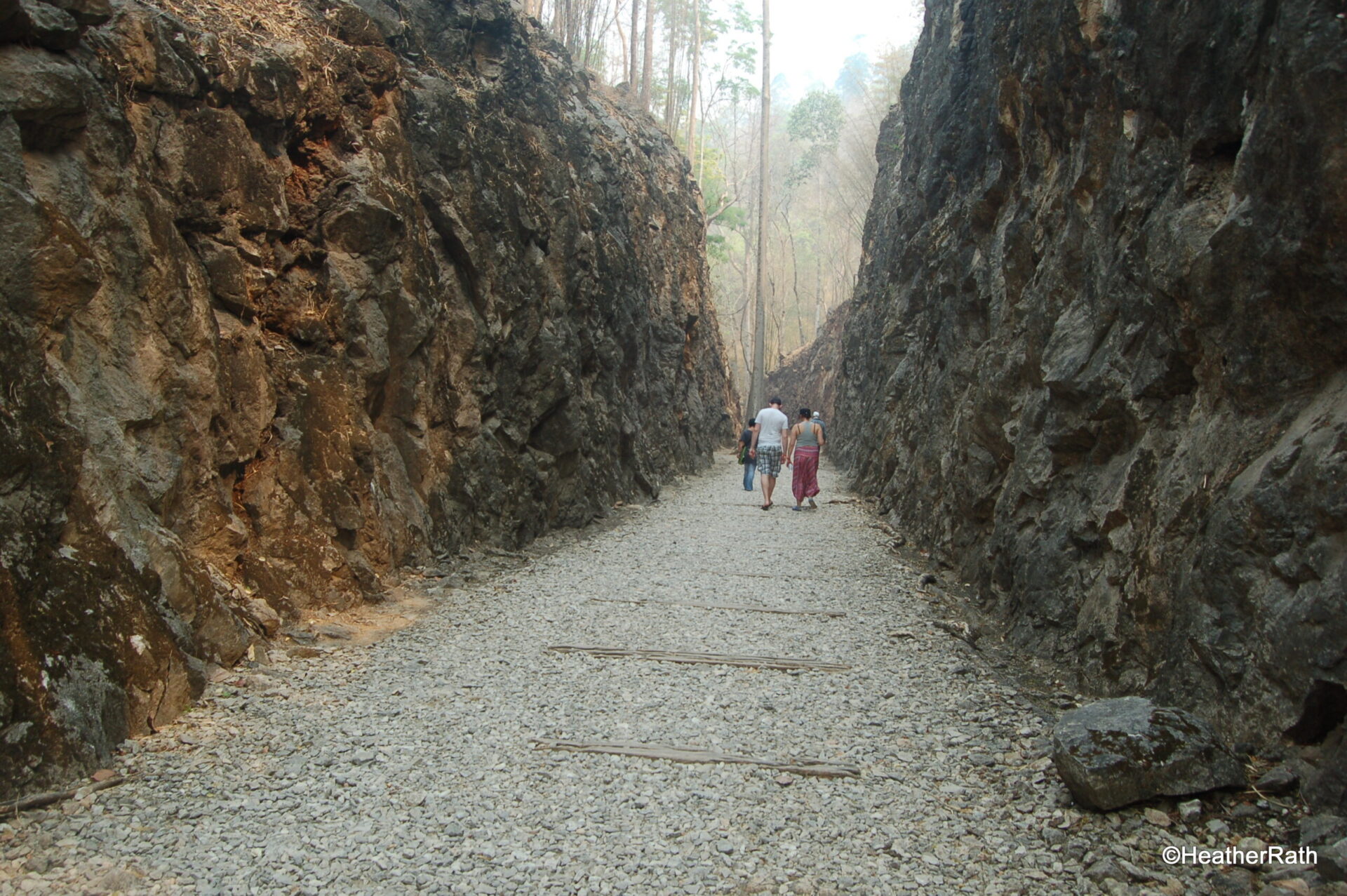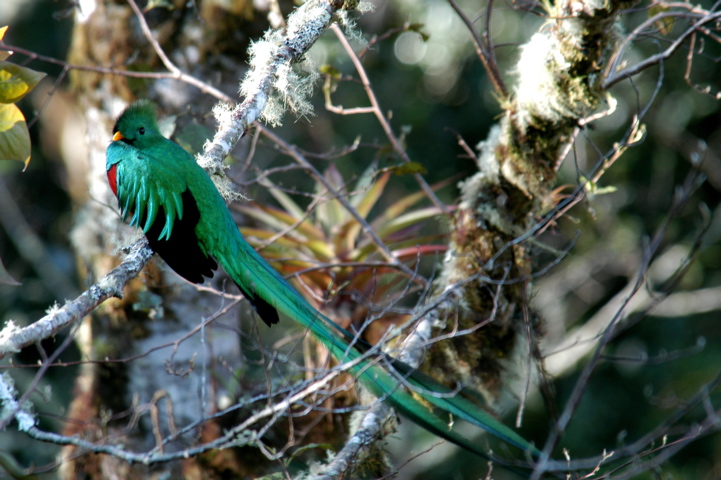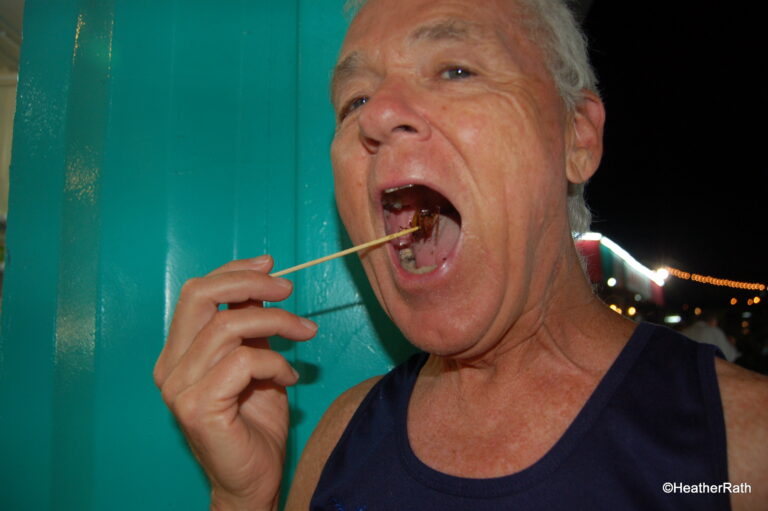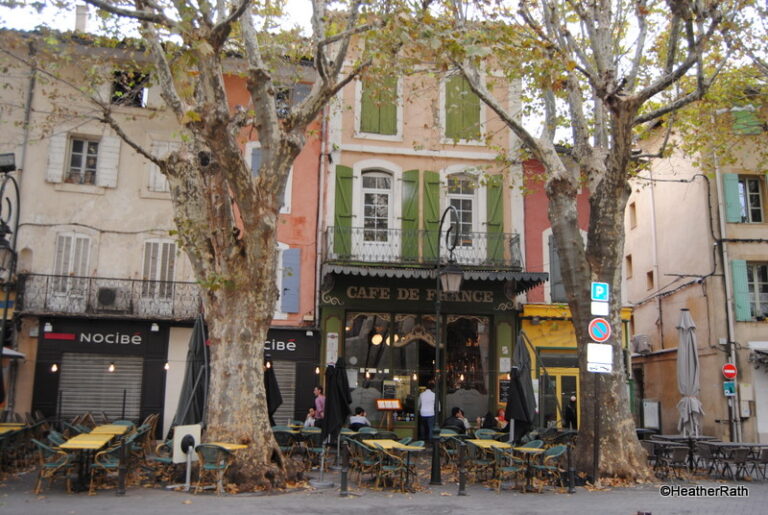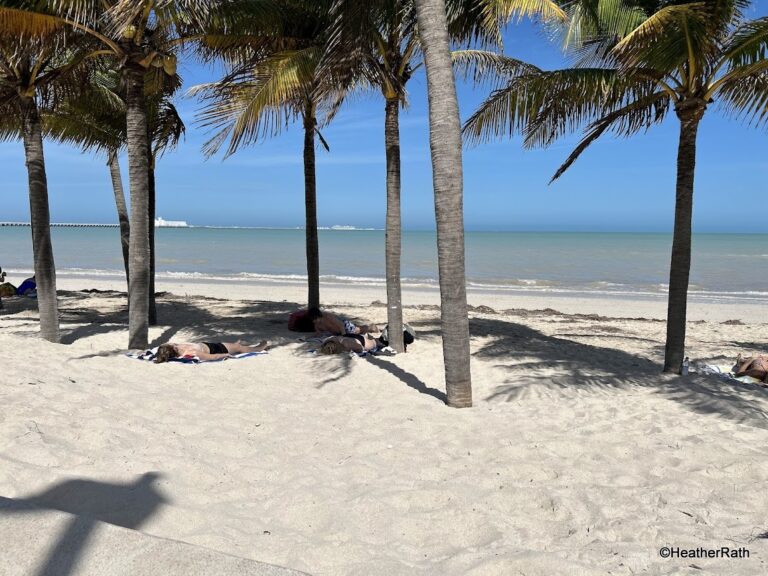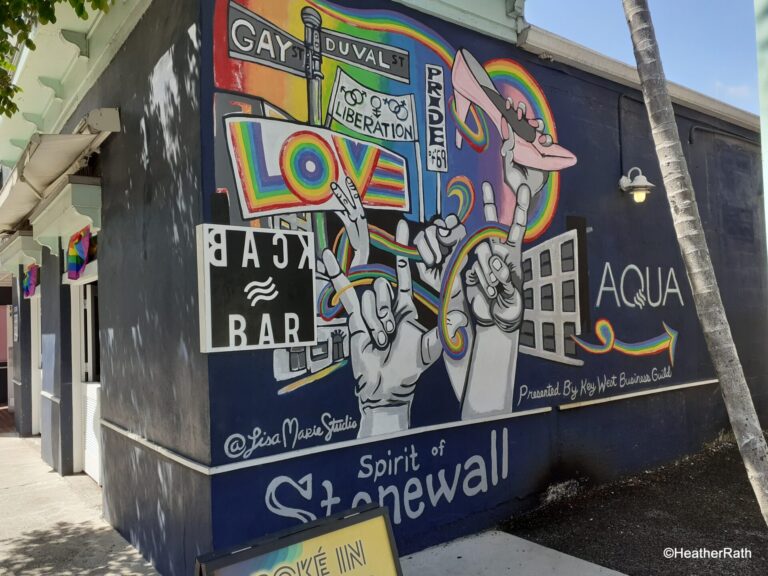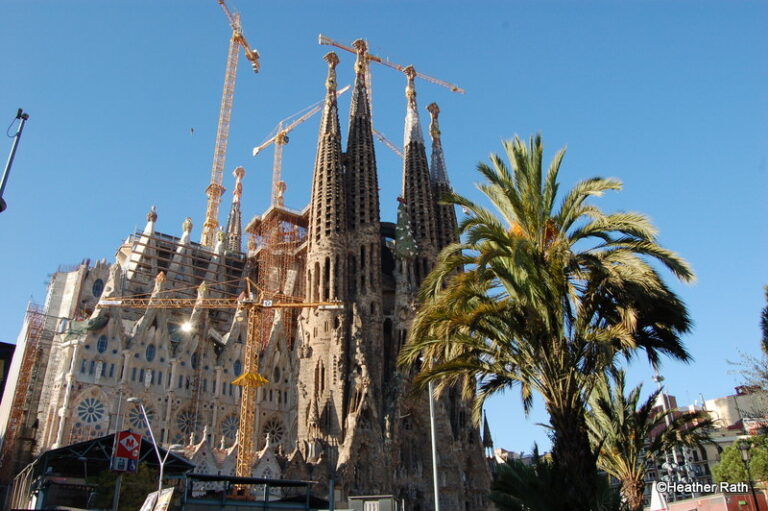World War II and Man’s Inhumanity to Man
—- In the Land of Smiles
Bridge on the River Kwai; Hellfire Pass
Two landmarks, Bridge on the River Kwai and Hellfire Pass in central Thailand, remain permanent monuments in this country from World War II. Brutality at these sites during the conflict highlight man’s inhumanity to man.
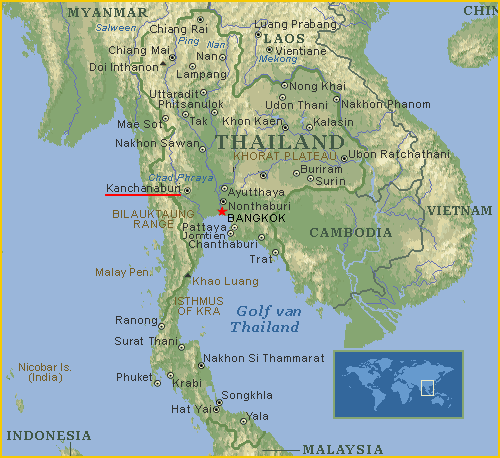
Bridge on the River Kwai movie
In Kanchanaburi, the famous Bridge on the River Kwai lies over the Kwai Yai River. The bridge gained notoriety in the 1957 movie by the same name starring Alec Guinness. Guinness won the Best Actor Academy Award for his performance in the film.
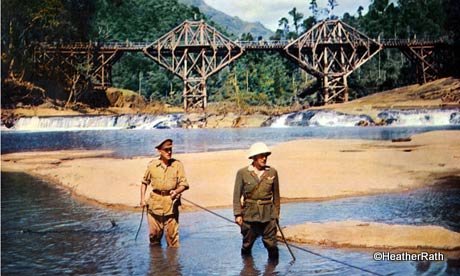
The movie is a fictional account of the building of the railway bridge over the river Kwai on the Burma(now Myanmar)-Thailand railway, known as the Death Railway.
Bridge over the River Kwai today
During the war, the bridge was destroyed several times as was an adjacent wooden (construction) bridge. The structure has since been rebuilt retaining a similar appearance to the original. It is currently a tourist attraction along with a tourist train.
We walked across the bridge, like many other tourists, feeling a sombre pull from the past.
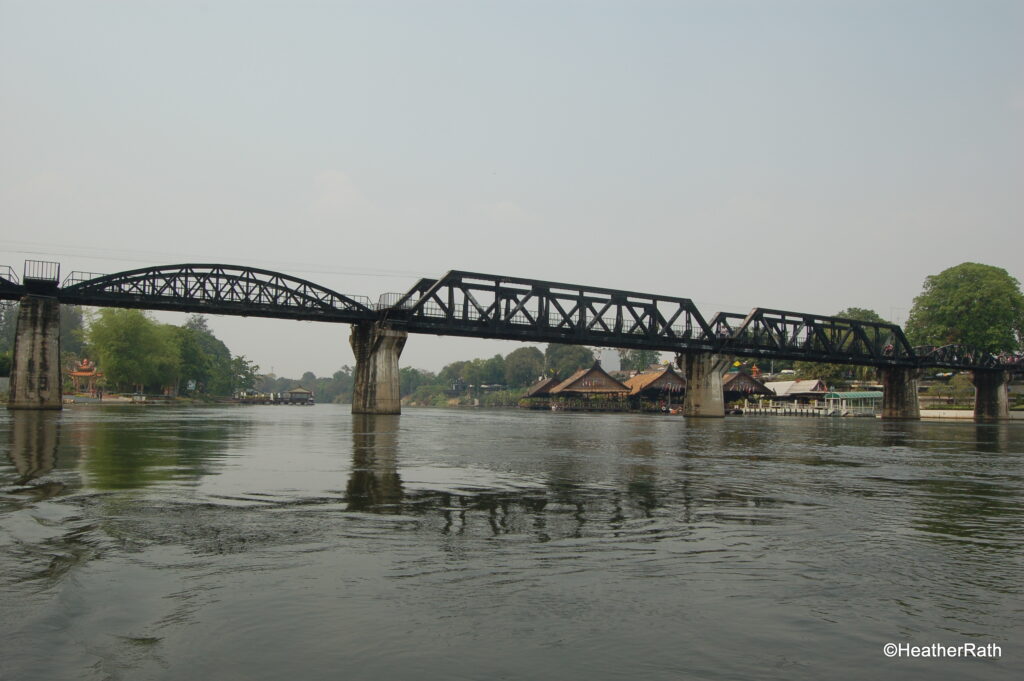
Death Railway bunkhouse replica museum
In the same area stands another war icon. Not until you visit this replica bunkhouse for prisoners forced to work on the railway can you begin to understand the horrors of war.
The POW bunk house at the JEATH museum in Kanchanaburi is a stark reminder of punishing living conditions leading to death.
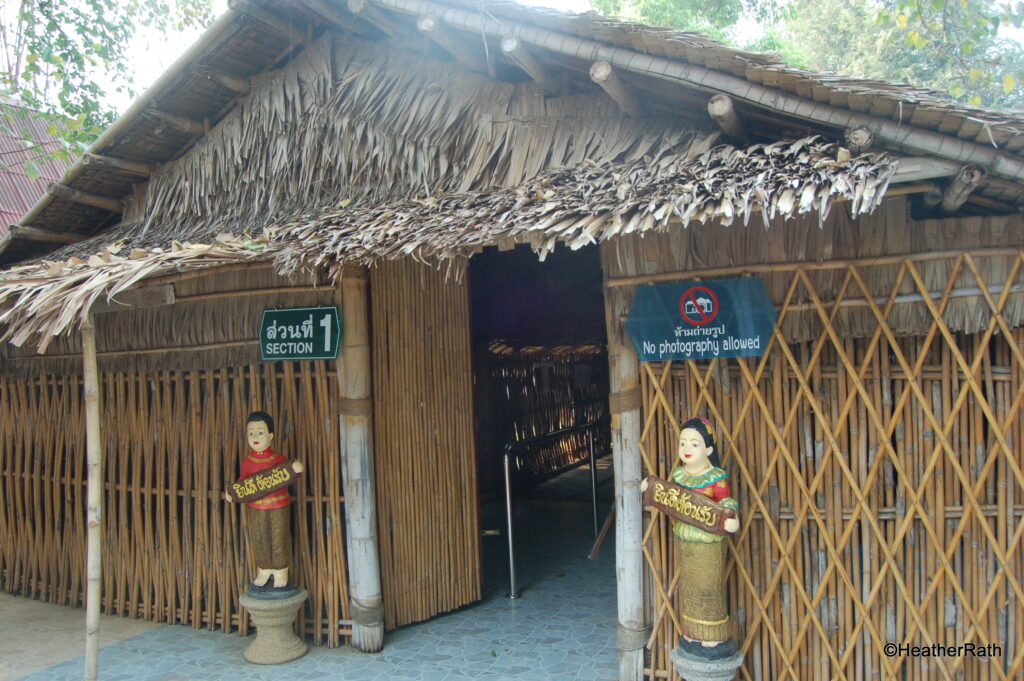
JEATH
JEATH is an acronym for the captive soldiers of Japan, England, America, Australia, Thailand and Holland who built the railway.
Museum records horrific event
This museum is one of several in the area to recognize and memorialize this portion of the war. Bunkhouse walls are made of bamboo. Sleeping platforms inside are made of bamboo slats.
Each man was allotted a space of 2 1/5 feet. In reality it was far less.
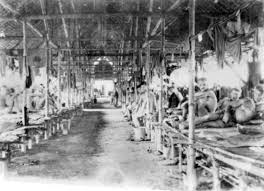
Sick prisoners
The bunkhouse was also home to those who were ill with malaria, cholera, dysentery and malnutrition.
Food fare for POWs
Food for the POWs was limited to two servings daily of a bowl of rice and salted vegetables with perhaps bits of fish and water.
HELLFIRE PASS
Stats tell the story
The depth at Hellfire Pass is 8 – 10 m (26 – 33 ft).
The entire excavation was achieved by hand under threat of beatings and death.
Hellfire Pass was the longest — at 450m (1476 ft) — and one of the deepest —25m (82 ft) — cuttings for the railway.
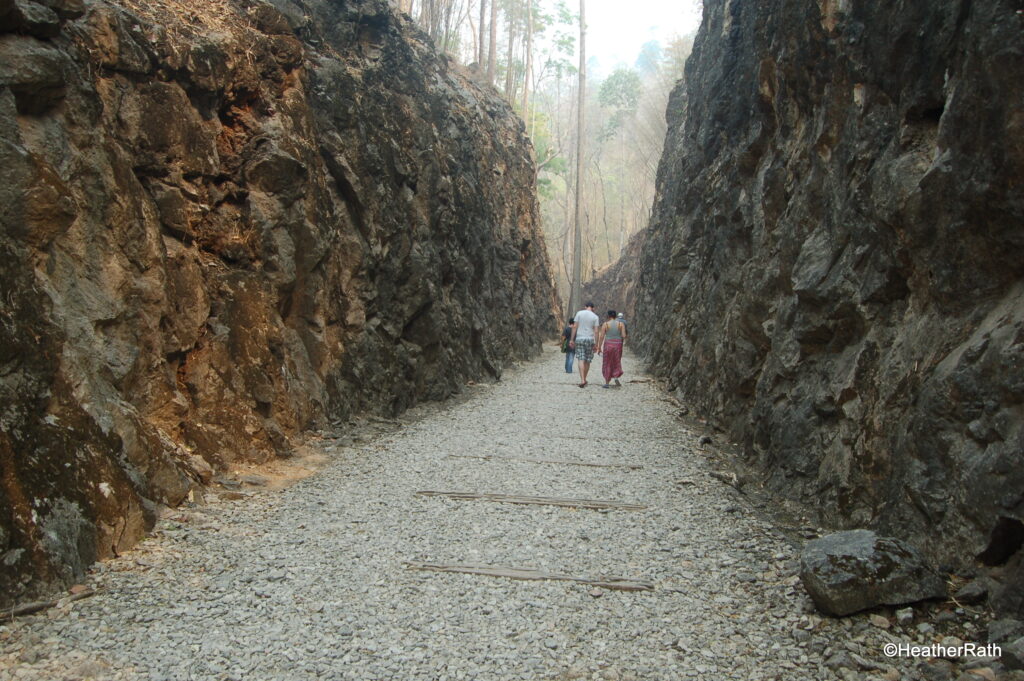
Insufficient tools
POWS and conscripted Asian labourers used only hand tools like picks, shovels, hoes and some dynamite to cut through the bedrock along the route of the railway. Excavated rock materials were carried away by prisoners in baskets or sacks.
POWs named this particular pass ‘hellfire’ because of their forced labour far into the night under the light of fires and torches.
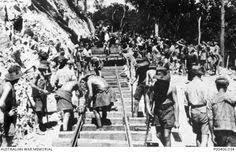
Number of Prisoners
About 60,000 POWs (mainly British, Australian and Dutch with some Americans) and approximately 250,000 conscripted Asians worked to build the “Death Railway” line.
Gruelling, Impossible Conditions
The Death Railway project began in October 1942. By the next year, 415 km had been completed under gruelling and almost impossible conditions.
Following completion, the Japanese hauled over 220,000 tons of military supplies into Burma/Myanmar during the period December 1943 to August 1945.
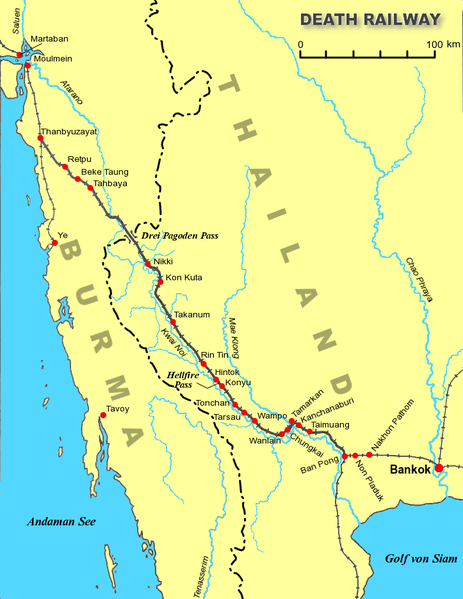
Cemeteries
Three cemeteries are dedicated to the memory of some of the POWs who died during the construction of the Death Railway. They hold the remains of 12,000 prisoners.
Of the 60,000 POWs who worked on the railway about 12,400 died (20%). Their deaths are attributed to disease, overwork, lack of nutrition and beatings.
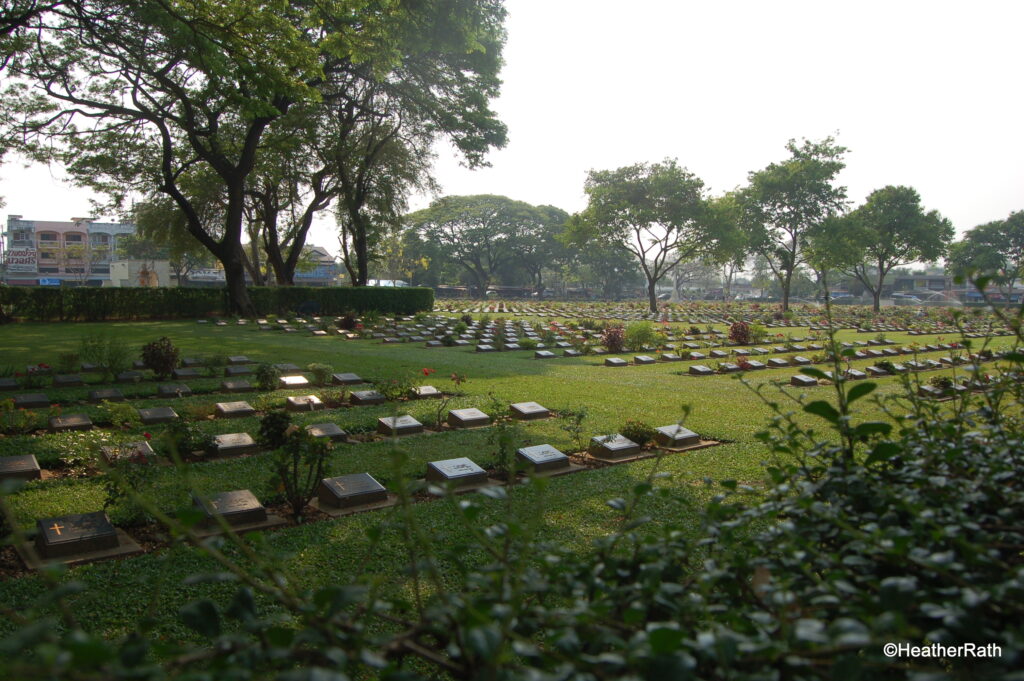
Of the 250,000 Asian workers, an estimated 90,000 died but some are as high as 150,000. There were no records for these deaths – only estimates.
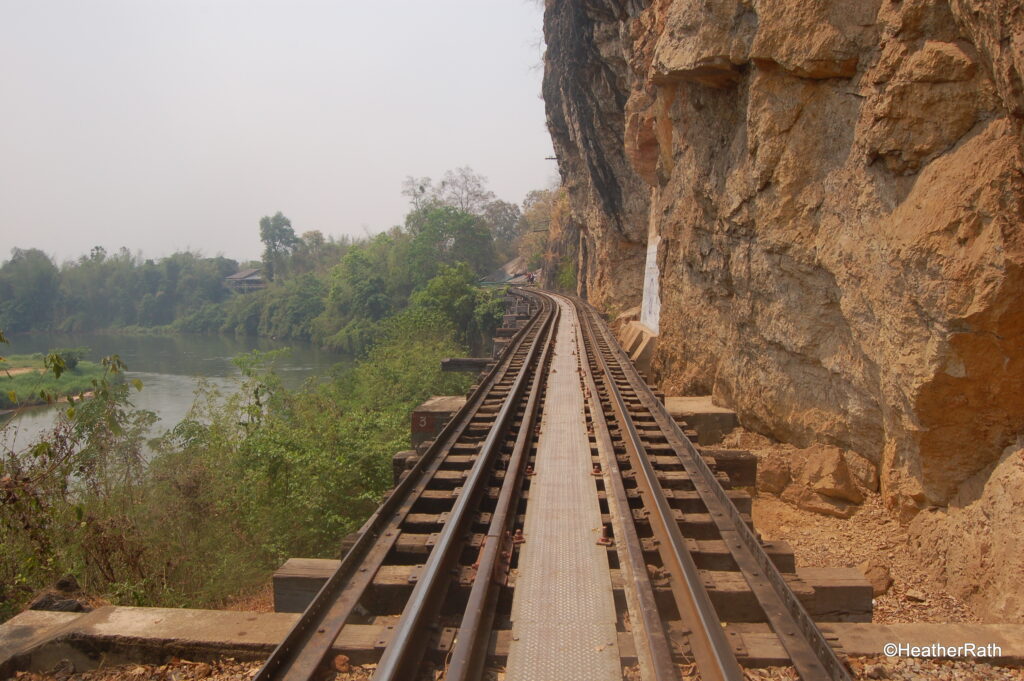
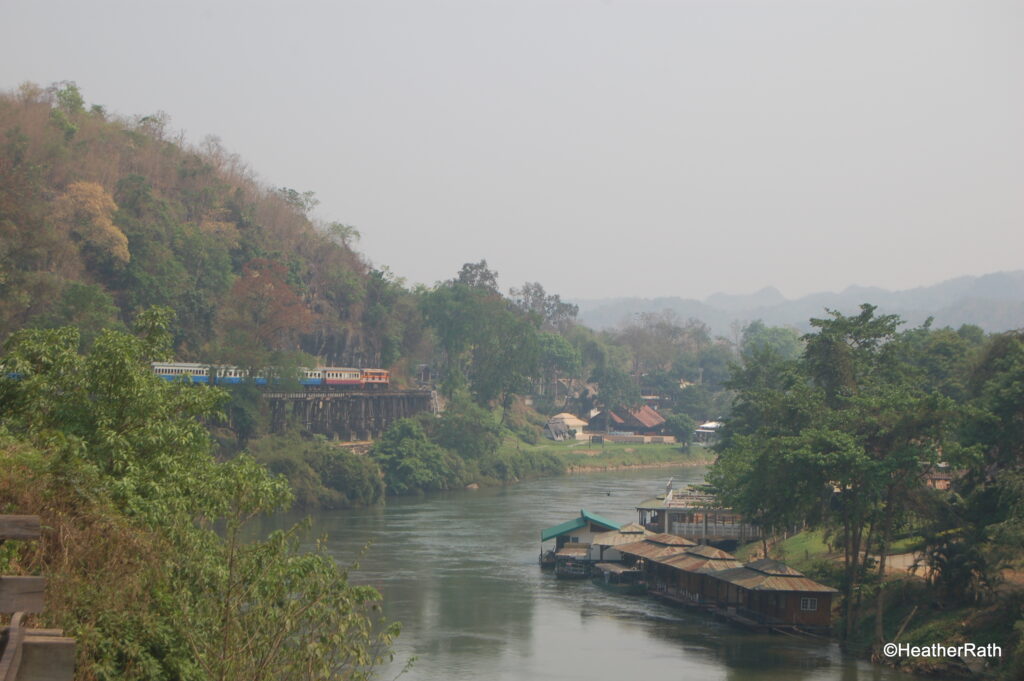
Reconciliation
Japanese/British soldier survivors meet 70 years later
Personal Reflections on Travel to Kanchanaburi
Getting to Kanchanaburi to view these sobering sites was a challenge for us.
At the time we were wintering in Phuket, Thailand. Kanchanaburi is 130 km (81 miles) northwest of Bangkok.
A Long Odyssey
From Phuket, we took an overnight VIP luxury bus to Bangkok (12 hrs) and then a van-bus to Kanchanaburi (3.5 hrs).
Our Mistake
Unfortunately, we exited our overnight bus at the wrong terminal in Bangkok. Our mistake cost us time. Ended up on a ‘collectivo’ that made countless stops and deviations.
A trip that would normally take two hours by direct bus took us three-and-half-hours.
So, after a total drive time of 15 and a half hours, we arrived dirty, exhausted, hungry and in need of a washroom!
Tuk Tuk …Not the safest highway transport
While in Kanchanaburi, we hired a tuk tuk and driver for two days. Sort of comfortable (not!) sitting on hard seats in the open back. Hot breezes swirled. Fast-moving autos sped around us. But our tuk tuk laboured forth. We cringed. Maybe not the safest highway transportation.
One day we travelled by tuk tuk to a site 80 km (50 miles) away. Arrived in just over an hour!
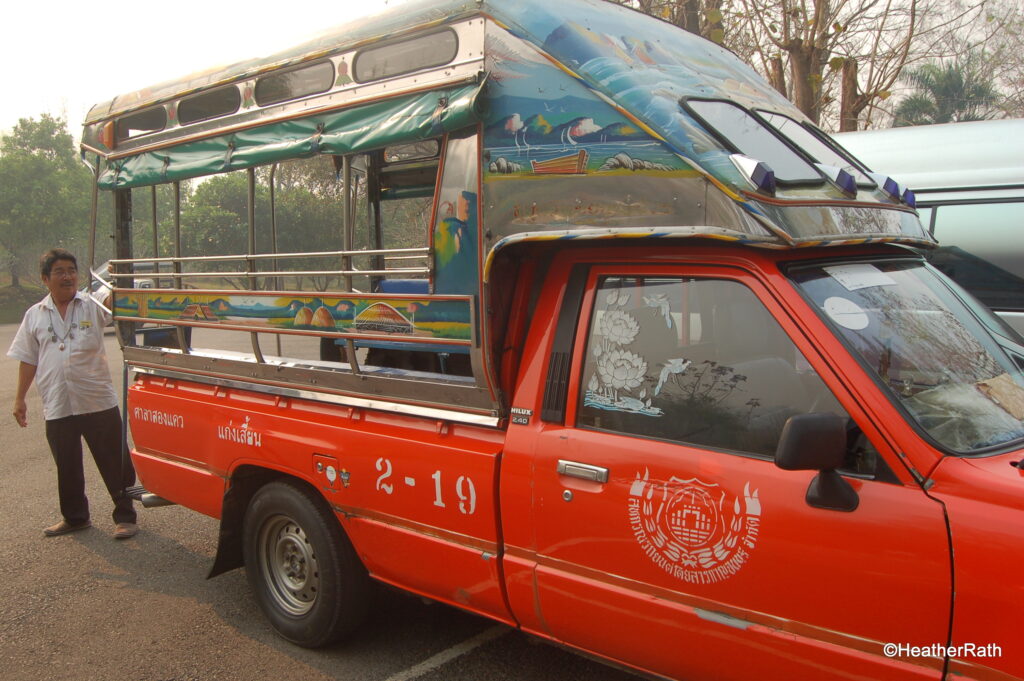
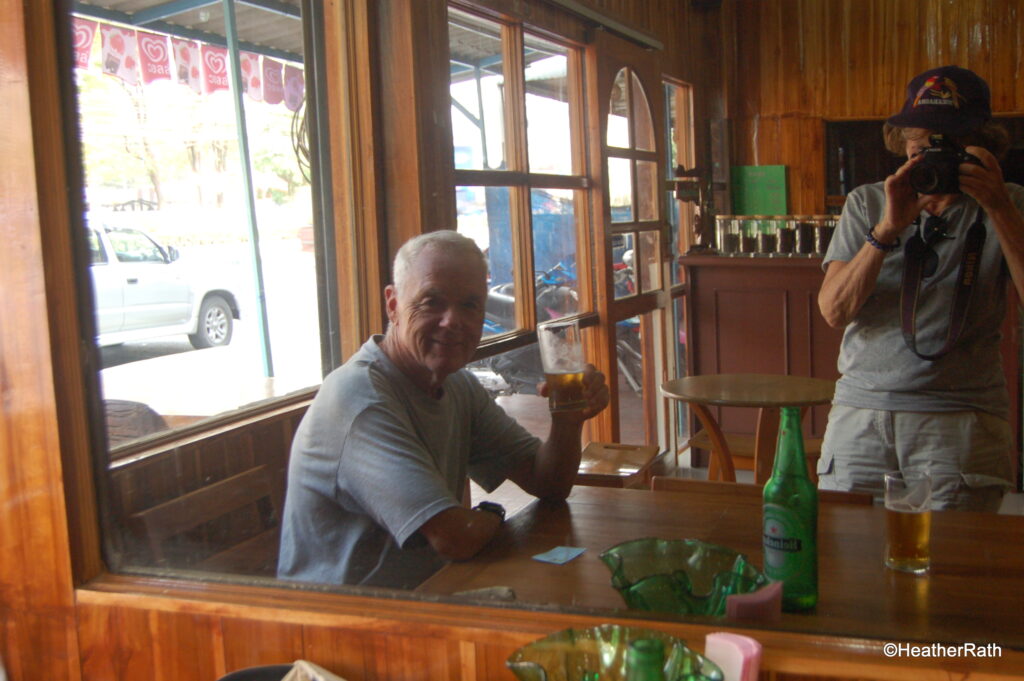
COVID update Thailand
Here is the latest update as we publish.
Sights and Sounds of Kanchanaburi
See our other blogs from Thailand
Travelled: March, 2014
